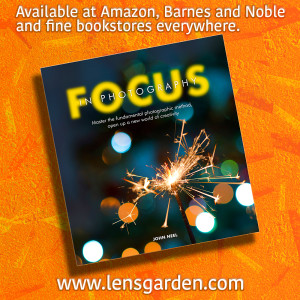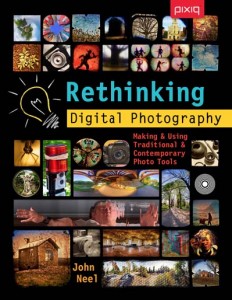Stop for a second with whatever you are doing.
Be as quiet as you can and listen carefully to your surroundings. Really listen. Do you hear that hum? You know it is there. We all can hear it. It is the audible frequency of the modern world.
Perhaps it is the computer or maybe the motor that runs your air conditioner, furnace or refrigerator. In my neighborhood, it is also the lawn mower or the chainsaw down the street and next door, a truck, car or motorcycle roaring down the highway, a train in the distance or a plane flying overhead. These are the sounds that we hear all the time. They rarely leave us in peace and quiet. They are the endless drones of ever-present machinery. They are clearly not the sounds of nature.
I’ll bet that nearly everywhere, there is a similar sound that permeates all of the environments we inhabit. It is a noise that we have suppressed into our everyday experience of the world. We hear it, but yet we don’t. It is simply there as a constant hum of human-generated energy.
The modern world moves at a variety of frequencies, which blend together into what might be called background or ambient noise. So far, we have lived with it for at least a few centuries. It is so much a part of our everyday experience of the world that we don’t really notice it anymore. The ancients would think it unfamiliar, puzzling and evil.
I would imagine that when the first factories, trains, motors of any sort began clattering, humming, banging and doing their works, humans began to notice the audible changes in their worlds. To them, it was the sound of progress. It was power, the convenience of the tool and the factory.
Prior to the industrial age, the sounds throughout the planet were mostly natural sounds of bird songs, insects chirping, leaves rustling in the wind, the rush of water or waves, the sounds of breathing and footsteps on the earth. Every so often a yelp or bark or scream might echo through the wild. The world seemed to be part of the experience of living. And, it was.
In the short history of the modern world, we have been disconnected from nature in part by the constant bombardment with human-induced noise. Those natural sounds are becoming less apparent as the new world’s growling gets louder and louder.
In seeing too, we have been disoriented by a comparable distraction of the modern world.
Everywhere, there are the artifacts of human technology and so-called advancement. The old and the new get layered into a maze of wires, signs, buildings, concrete, roadways and pavement.
Over short periods of time, as we go from one technology to another and from worn out to the newly made, we use the environment as a dumping ground for everything we create. Things are discarded onto the land and into the seas.
All of those things included in our surrounding views, either old, new or discarded, become visual noise. It is a noise that obscures the natural beauty of our world. It inhibits our seeing and reduces our nature.
Nighttime is filled with the ambient pollution of billions of manmade lights that are reducing the visibility of the nocturnal sky. It is yet another noise that has become a part of the everyday experience of life. Our ability to light up the darkness has also reduced our awareness of the stars, the planets, and our universe.
The noises we have created are not only an unnatural experience for ourselves but also for all other life that has had to adapt to our consumptive ways.
In our disconnectedness, we have forgotten our relationship with the planet and our own dependence on its life giving resources.
To really be a part of the natural world, we must find those sacred places that might still provide a sanctuary from what we have created by the hustle and bustle of the new world. Those places are becoming more and more difficult to find. And when we do find them, we discover more and more of our technologies are ever intruding to steal it away.
Perhaps that is one reason why we all seem to love water. The oceans, streams, and waterfalls create their own sounds that drown out the white noise of technology. They represent a more primal experience of living. The deep woods, major oceans, jungles, and deserts of our world are soon to be the only places left where we might truly experience life’s touches, its closeness, and its greatness.
Not too long ago, the world was much more natural. It was full of wonder, awe, imagination and spirit. I can remember the world that was much bigger, quieter, much less polluted with huge stars in the blue evening sky without contrails or satellites. It hasn’t taken much time to screw it up.
How did we let it go this far? Can we regain what has been lost? Do we care enough?
Photography may be a way to turn us around. It can play an important part in communicating what we have lost, what we are losing, and why we need to consider what we might do next.
There are those photographers who see the world I describe here. They use their cameras and their talent to show us the beauty of the world as well as a vision of the noise, which we have created. It is our responsibility to see what is there. It is up to us to act and to create the change.
I believe that photography relies on using all the senses. Listen to your Planet. That noise you hear is getting louder. It’s not getting better.
Among its many possibilities, the conscientious use of photography just might be a way to end the uproar caused by our materialistic excessiveness.
But it appears that time is running out. That old saying – “better late than never” – may not apply.
Read about my latest book here: Rethinking Digital Photography.
Read about my first book here: Rethinking Digital Photography.
Please have a look at some of my other posts on LensGarden here.
NOTICE of Copyright: THIS POSTING AS WELL AS ALL PHOTOGRAPHS, GALLERY IMAGES, AND ILLUSTRATIONS ARE COPYRIGHT © JOHN NEEL AND ARE NOT TO BE USED FOR ANY PURPOSE WITHOUT WRITTEN CONSENT FROM THE WRITER, THE PHOTOGRAPHER AND/OR lensgarden.com. THE IDEAS EXPRESSED ARE THE PROPERTY OF THE PHOTOGRAPHER AND THE AUTHOR.






I’ve done field recordings in spaces where I have felt that photography hasn’t properly or actively portrayed what was going on.
Kathy,
How did you use the recordings?